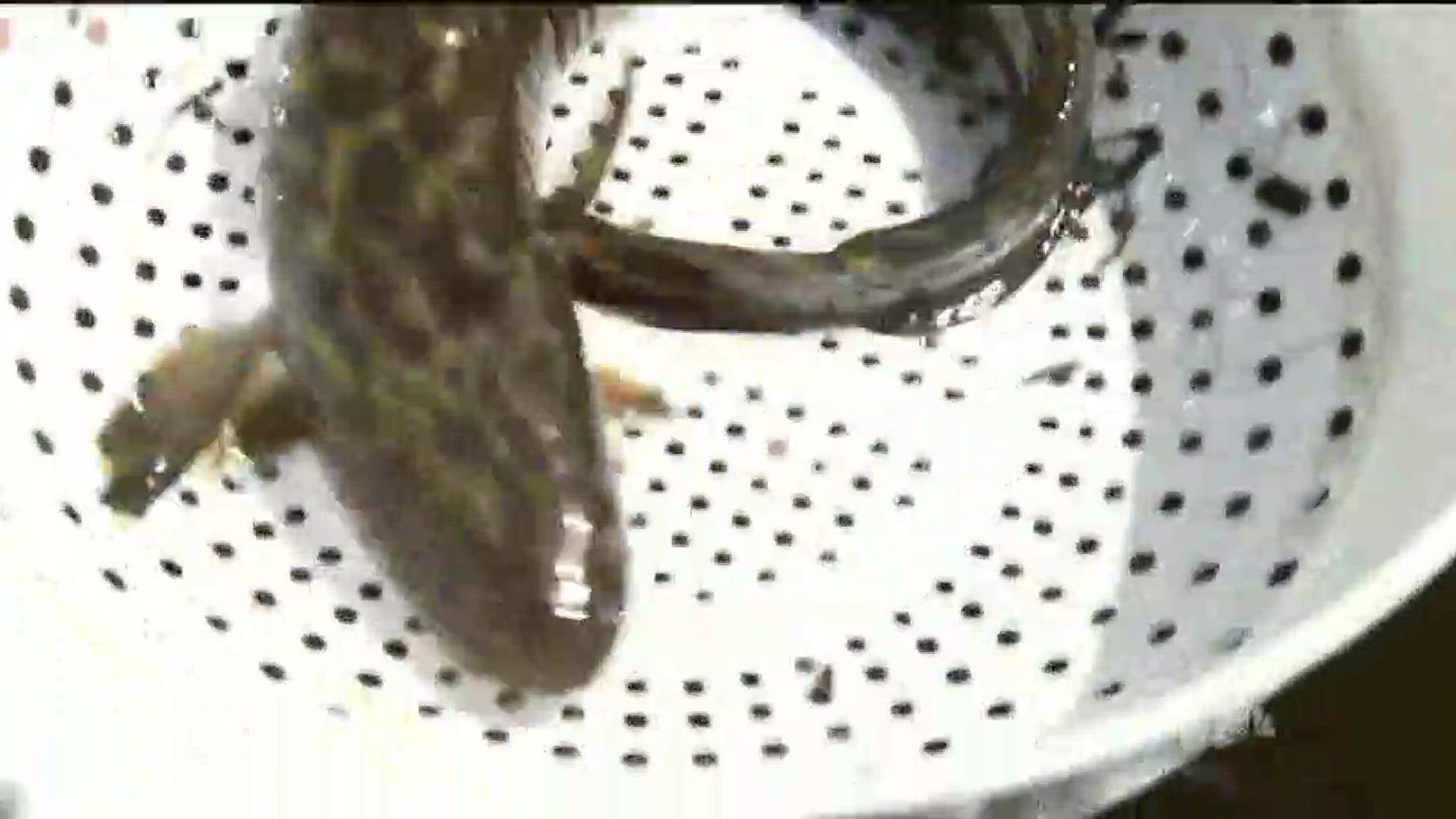AITKIN COUNTY, Minnesota – If driving past the picturesque Ripple River’s babbling waters just south of Aitkin this summer, you may have glimpsed fishing like you’ve never seen before – people in waders either carrying yellow poles with large rings at the end or long polls with nets.
Don’t worry; it’s not some fishermen breaking the law.
It’s actually a Minnesota Pollution Control Agency team fishing for the truth about the river’s water.
This particular five-person fishing team is part of a statewide, 10-year cycle of reviewing all 80 Minnesota watersheds to determine water quality.
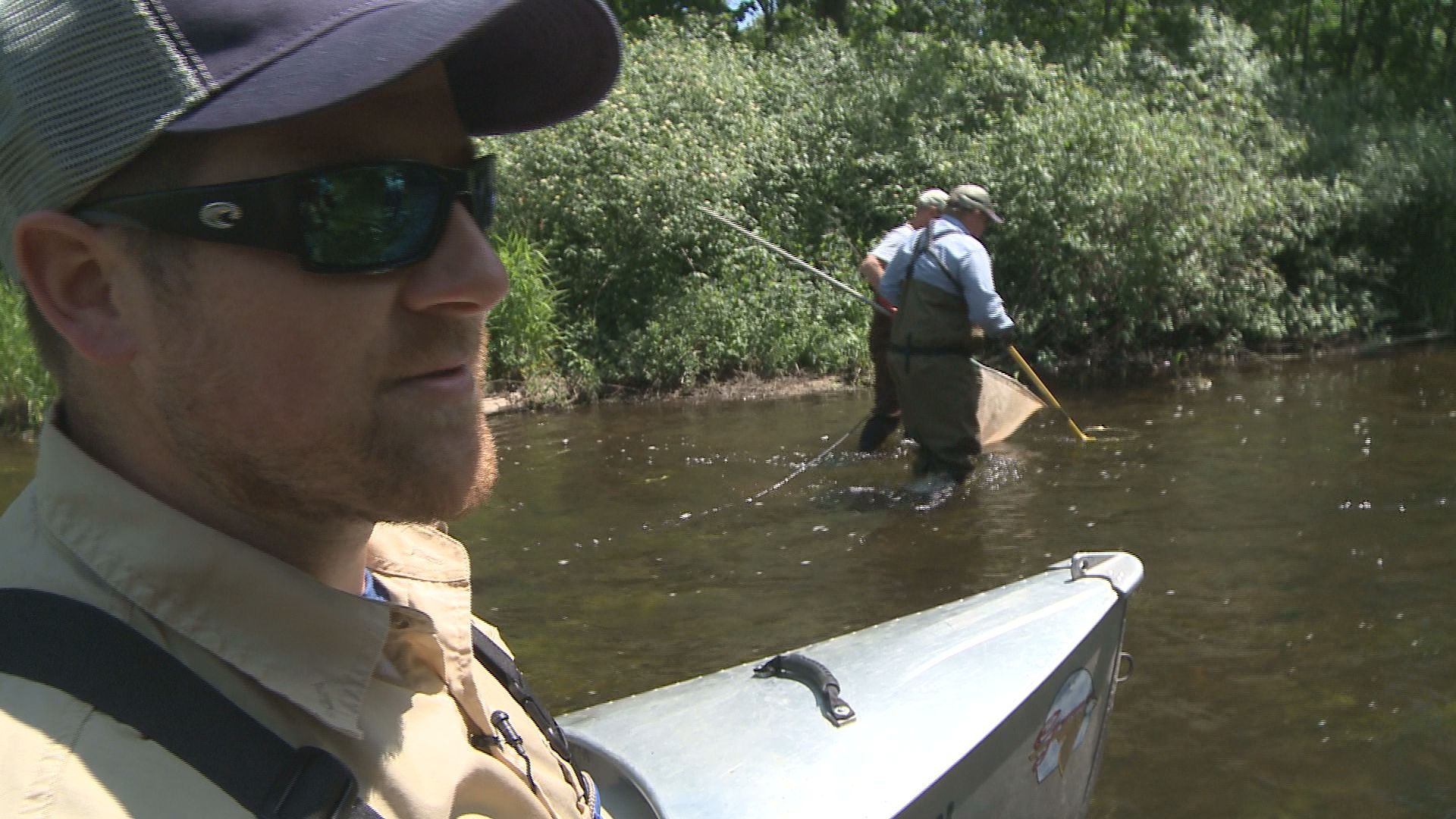
“We’re gonna work up 500 meters from this point,” says Chad Anderson, who is an environmental specialist with the MPCA’s North Biological Monitoring Unit.
Low voltage fishing for a higher cause
He calls their task electrofishing.
In short, the crew uses the yellow polls to send a low voltage jolt into the water, which temporarily stuns the fish and allows easy capture.
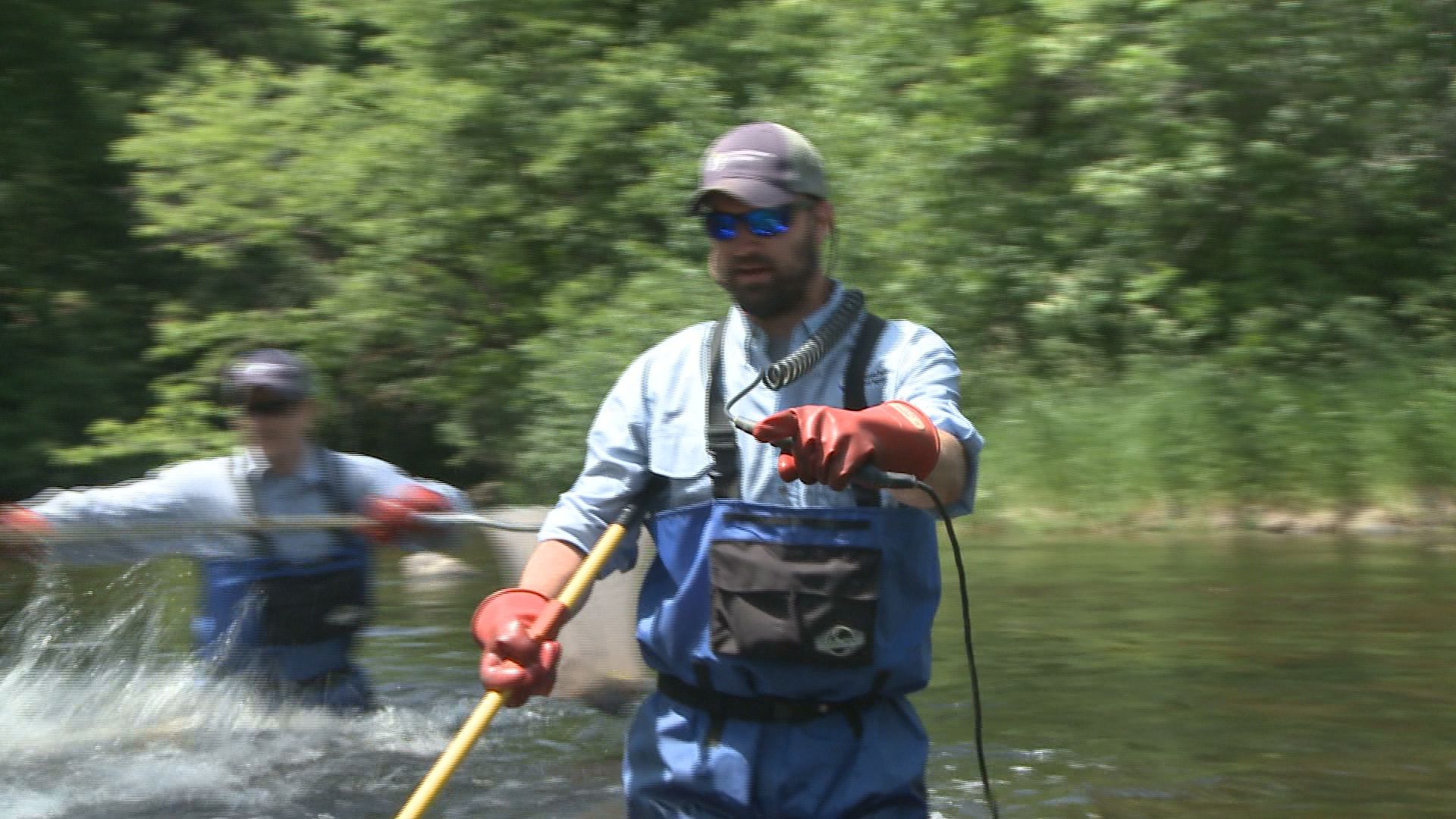
One crew member yells, “There’s something big.” Another vigorously searches with the net.
“We’re not harming the fish, and we’re getting a good representation of everything that’s swimming in this river,” Anderson says.
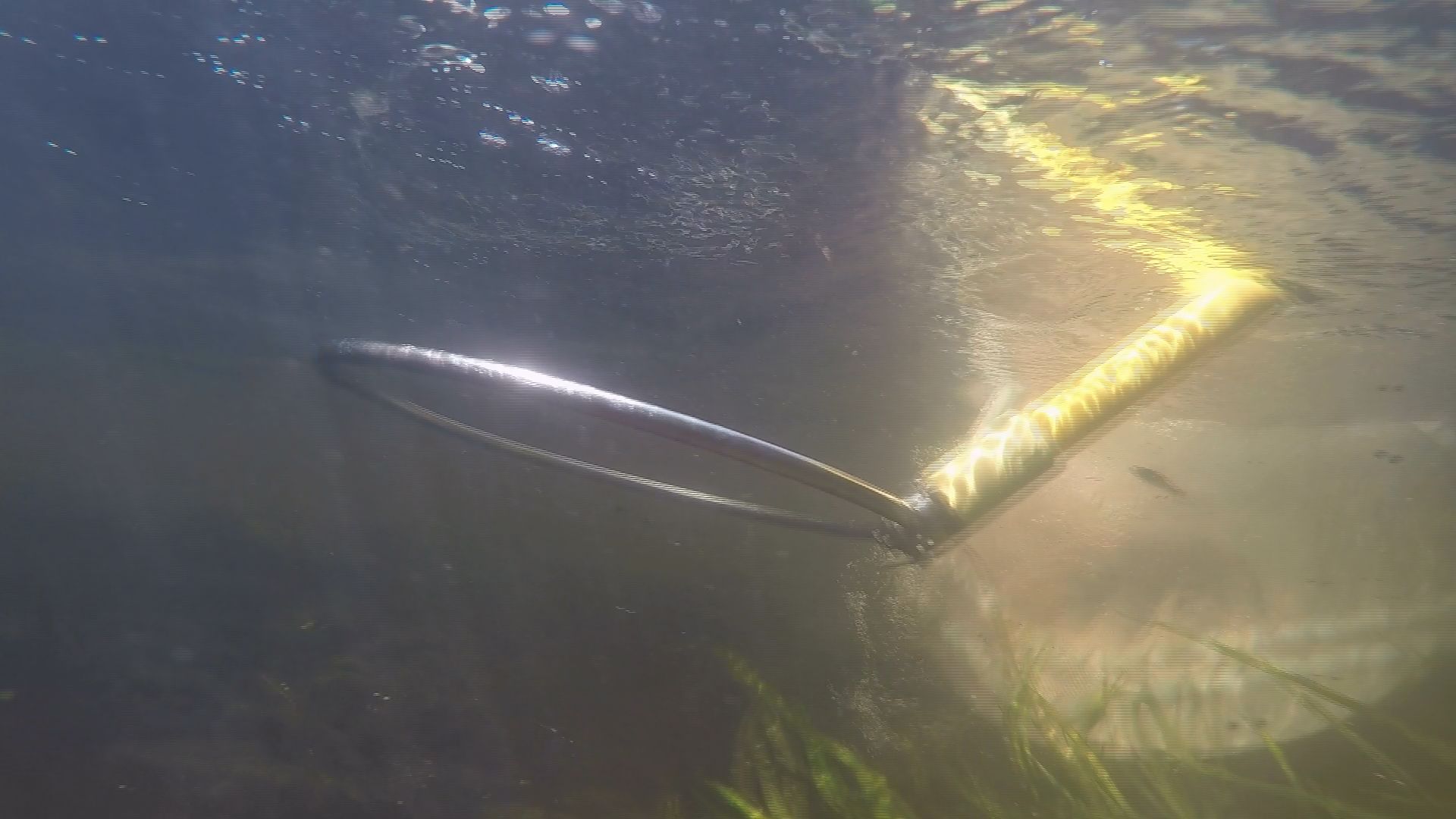
The crew quickly starts to collect and dump fish into a water-filled tub, which is in a boat that Anderson drags up the river.
And crew members like the fish they’re finding.
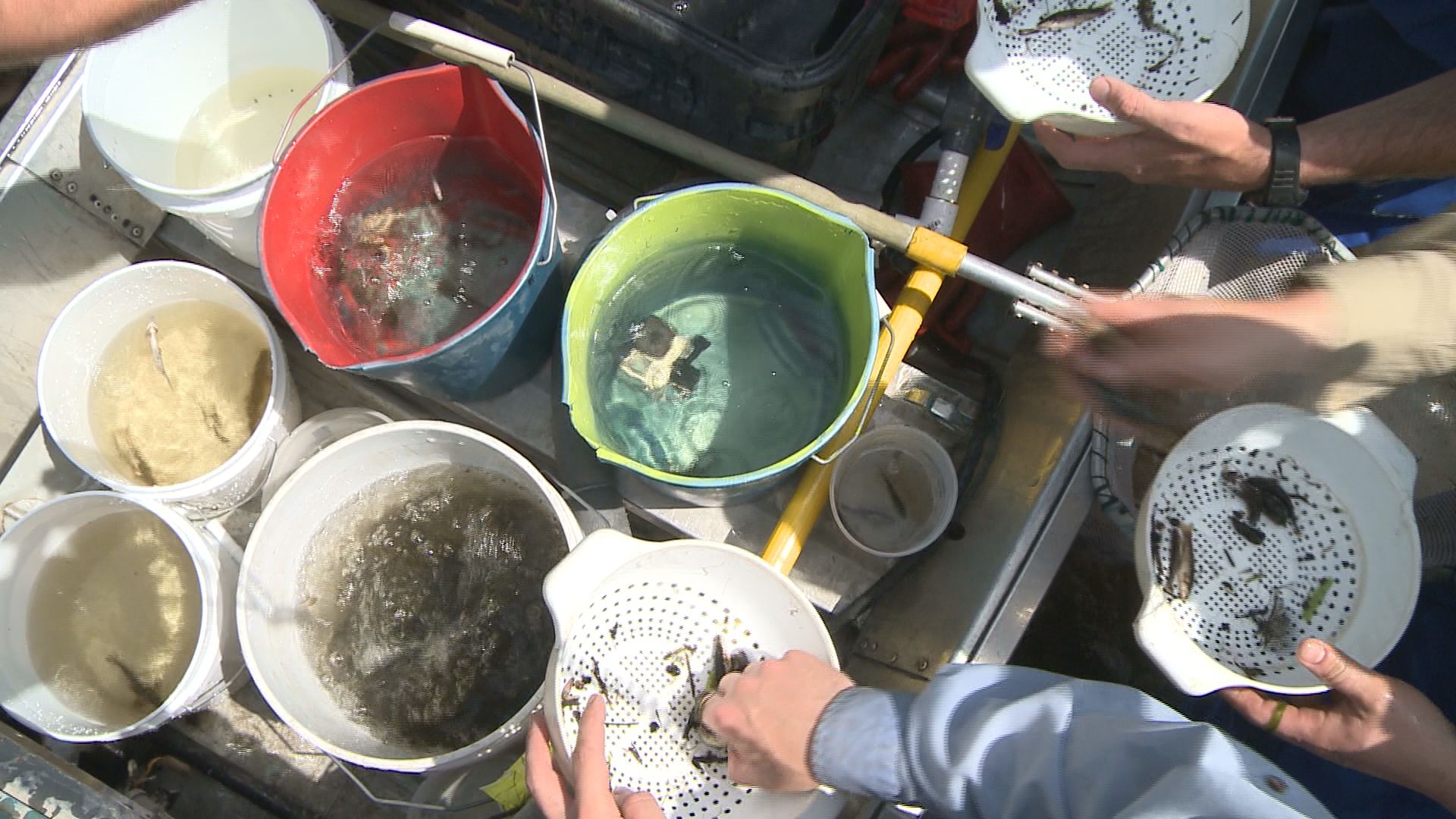
Showing off a slimy – what some would call ugly – eelpout, Anderson notes, “Another fish that’s an indicator of good water quality.”
Biologist Nate Sather holds a tiny longnose dace, which is barely the size of a finger but is another positive sign. “They’re sensitive to disturbance and pollution. It’s good to find them in here,” Sather says.
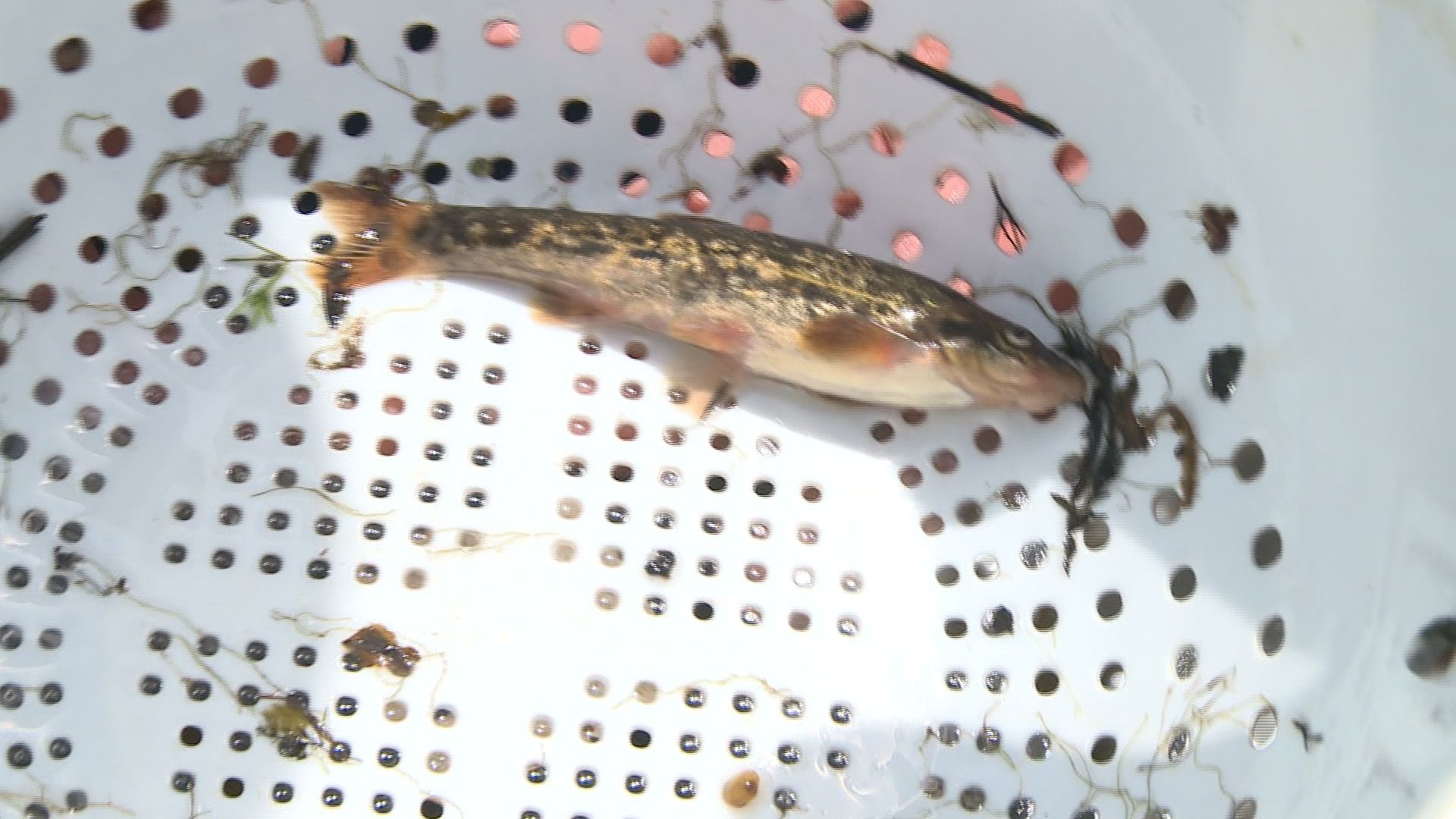
The fish the crew finds truly tell a water quality story.
“In general, fish and like aquatic insects are really good indicators of water quality, and you can really get an idea of the stream by looking at the species you find,” Anderson says.
Lake sampling
On nearby Farm Island Lake, which is one of several lakes on the Ripple River system, another crew is on a “fishing” expedition of sorts.
“It’s a beautiful day for fishing, but, yeah, we’ll be just grabbing some bottles of water today,” says Joe Hadash, MPCA environmental specialist.
But Hadash’s team doesn’t want just any bucketful of water. He’s seeking samples from the surface and the bottom – some 60 feet down.
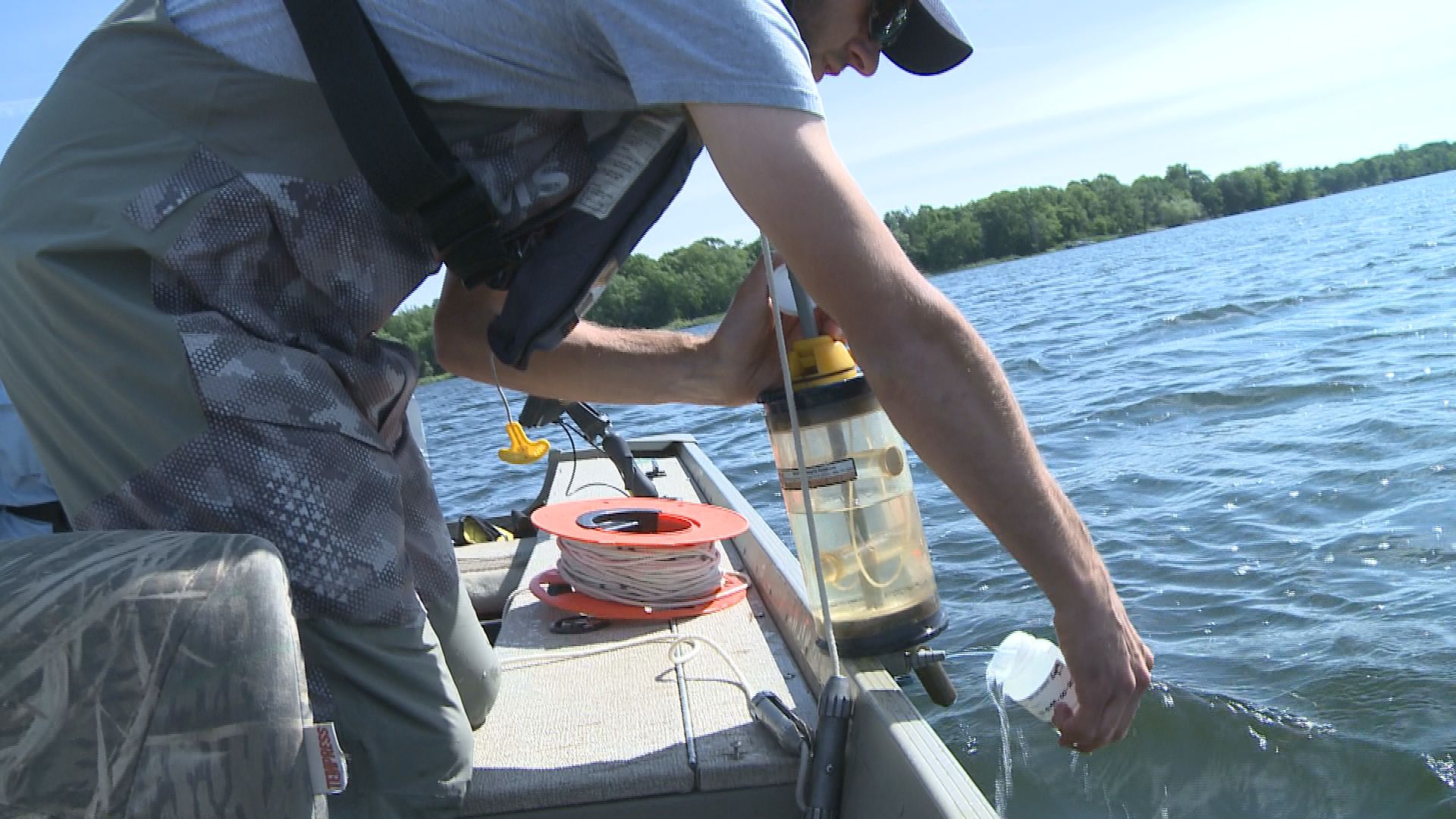
The samples will reveal a water chemistry story and whether the lake meets standards for recreation such as swimming and fishing.
His teammate Quinn Sahulka, an MPCA pollution control technician, boils it down this way: “When the environment is healthy, people are healthy.”
After all, people have lived and will live on lakes like Farm Island, people like Chad Anderson’s grandparents.
“I grew up coming up to this area. It’s just as nice now as I remember when I started coming up, and I hope to keep it that way for my daughters,” Anderson says.
Catch and release for a cause
Back on the Ripple River, the electrofishing crew measures the fish before returning them to the river.
In all this river and lake sampling, if the MPCA finds problems, it will seek solutions. If the water is pristine, the MPCA will work to protect it.
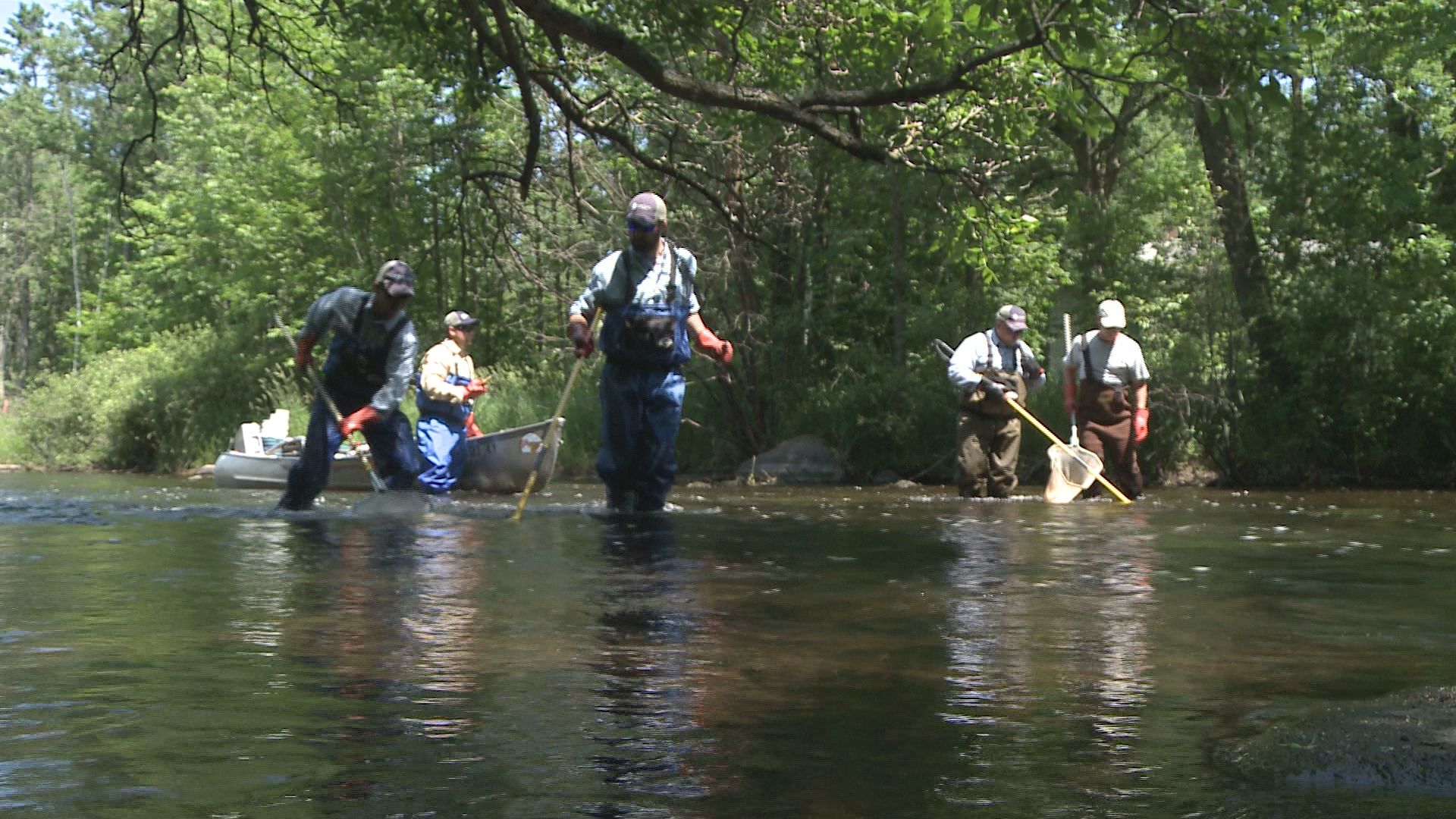
Ultimately, the Ripple River’s water does not just stay here; it runs into the Mississippi River and beyond.
As Anderson puts it, “I feel fortunate to be able to help protect the water quality that we have in Minnesota.”

